As a state capitol, Sacramento has everything you want in an important city: historic regions from the Gold Rush era, plentiful museums, and nature preserves featuring unique local wildlife. While the city is buzzing with exciting things to do, it is also close to many natural areas that offer escape and tranquility, and birds. The next time you’re in the area, check out some popular birding spots and look for these must-see birds in Sacramento!
Sandhill Crane
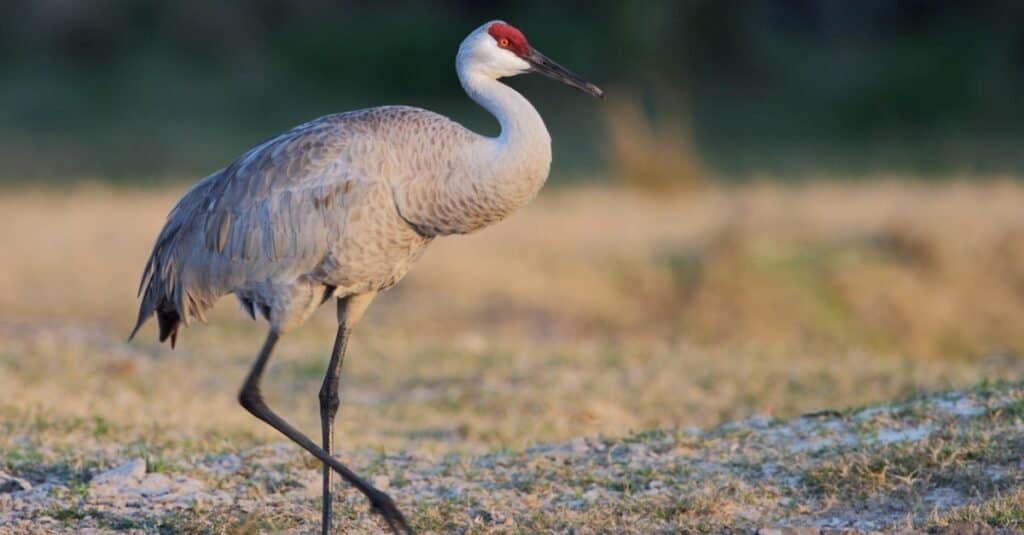
Sandhill cranes find their way to the Central Valley in California during winter. You can find them near pastures, grasslands, and wetlands.
©iStock.com/WMarissen
Habitat and Range: The sandhill crane has a rather dispersed population in the United States. They typically breed in Canada and winter in the Southwest and Florida. But some find their way to central portions of California. You can find them in the Central Valley during winter, where they live near pastures, grasslands, and wetlands.
Features and Coloring: They are tall and heavy-bodied birds with long legs and long necks. They have gray and rusty-brown plumage, with red skin on their crown.
Diet: Insects, aquatic plants, rodents, reptiles, baby birds, seeds, and berries
Vocalizations: Loud bugle calls, moans, and hisses
Nests: A mound of plant material in marsh vegetation
Peregrine Falcon
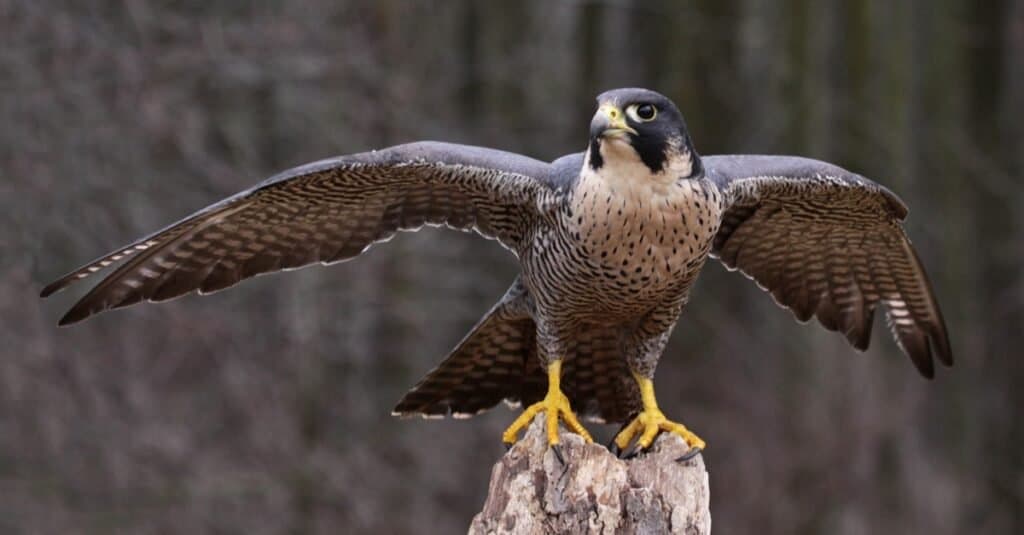
Peregrine falcons live year-round in California. Look for them in Sacramento during winter in open areas near lake edges.
©Chris Hill/Shutterstock.com
Habitat and Range: Peregrine falcons migrate throughout most of the United States, but California is one of the few states with year-round residents. The best time to find these raptors is during winter in Sacramento wildlife areas. You can spot them in open areas near lake edges.
Features and Coloring: They are one of the largest falcons on the continent and feature long, pointed wings and long tails. These birds are bluish-gray above and streaky white below, with yellow feet, bills, and eyering.
Diet: Birds and small mammals
Vocalizations: Harsh, rasping calls
Nests: A simple scrape on a cliff ledge or other structure
Surf Scoter

The surf scoter winters along the California coast. During foul weather, these seaducks find their ways inland to take shelter.
©Glenn Price/Shutterstock.com
Habitat and Range: The surf scoter breeds in Northern Canada and Alaska and winters along the United State’s coastlines. Occasionally, some make their way inland around Sacramento. You will likely spot one during foul weather as groups move away from the coasts and take shelter.
Features and Coloring: These are medium-sized seaducks with large, sloping beaks and thick necks. Adult males are black with white patches and orange bills.
Diet: Mollusks, crustaceans, aquatic insects, fish, and some plant material
Vocalizations: Gurgling calls and soft whistles
Nests: A shallow depression hidden under low trees away from water
Rufous Hummingbird
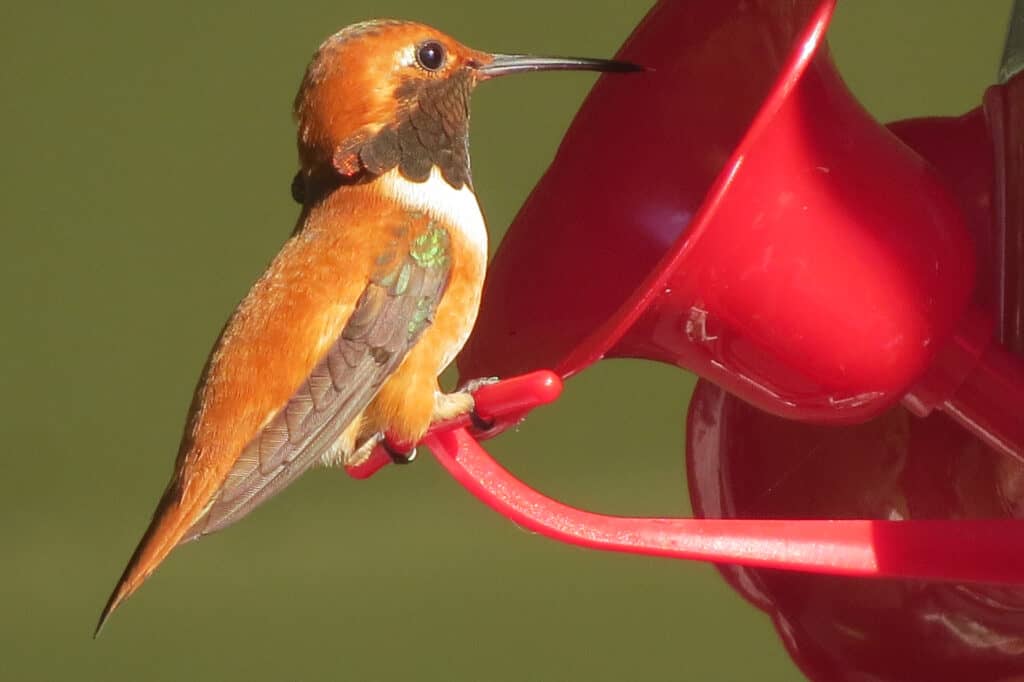
Stopping to rest in meadows, the rufous hummingbird makes its way through Sacramento during migration.
©Rachel Lambert/Shutterstock.com
Habitat and Range: The rufous hummingbird breeds in Alaska and the Pacific Northwest, migrate through the Southwest, and winter in Mexico. You will find this species in Sacramento during their migration, where they stop to rest in meadows.
Features and Coloring: These small hummingbirds have short wings, tapered tails, and long, straight bills. They have bright orange bodies with white undersides and iridescent red throats.
Diet: Nectar and insects
Vocalizations: Fast chips and wing hums
Nests: A compact grass and moss cup well hidden in trees and shrubs
Snowy Plover
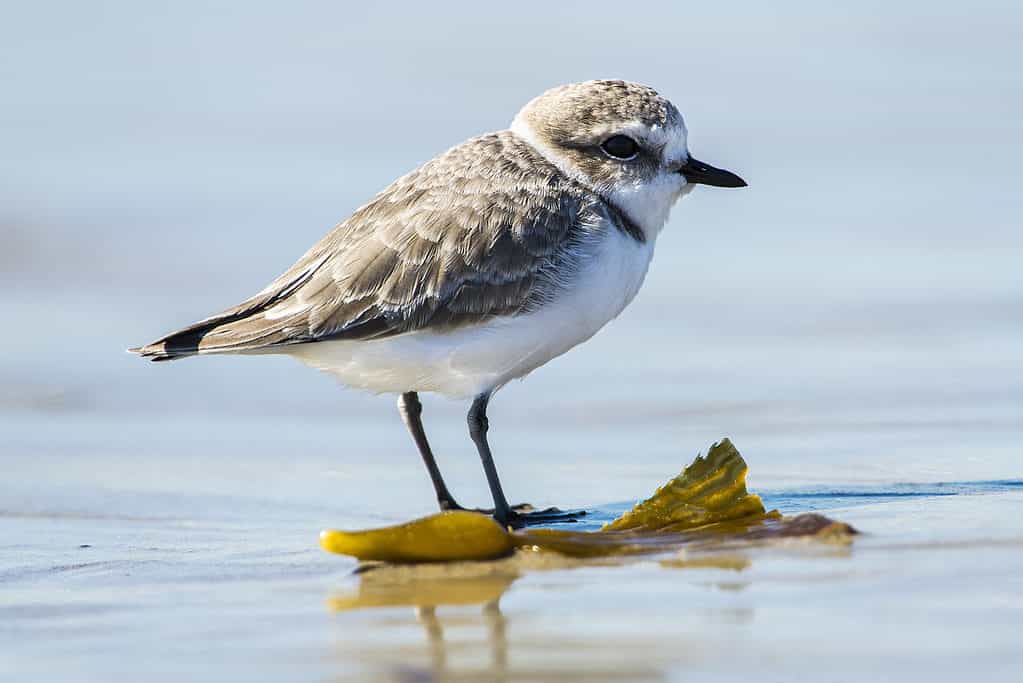
Snowy plovers live year-round along California’s coast. You will find them near shores, lakes, ponds, reservoirs, and rivers.
©iStock.com/drferry
Habitat and Range: The snowy plover lives year-round along California’s coast, while some populations inhabit areas further inland. They live in open sandy areas near water, such as shores, lakes, ponds, reservoirs, and rivers.
Features and Coloring: They are small shorebirds with short necks, large heads, and plump bodies. Adults are sandy brown above and white beneath. They also have black patches on their faces and necks during summer.
Diet: Crustaceans, insects, and marine worms
Vocalizations: Sweet, whistled calls
Nests: A shallow scrape on open bare ground
Long-Eared Owl
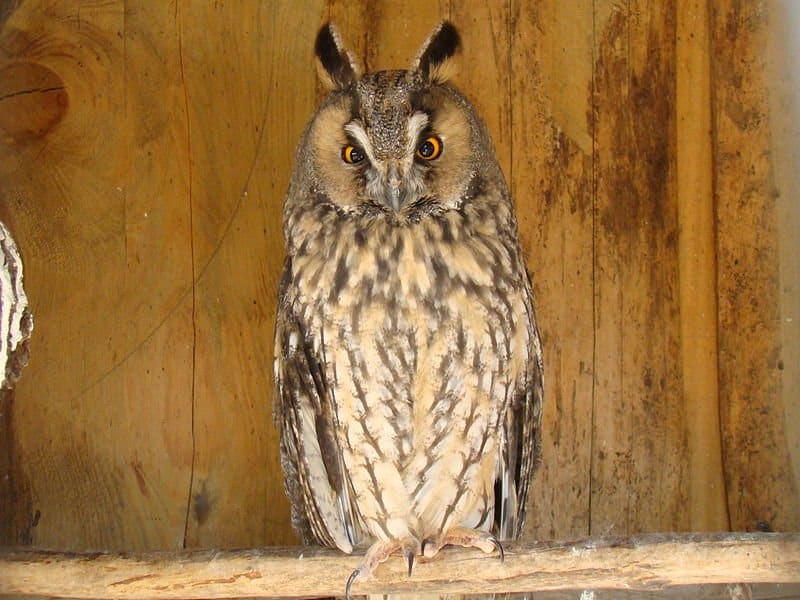
Long-eared owls spend their winters in Sacramento, where they inhabit woodlands, conifer groves, meadows, and prairies.
Habitat and Range: The long-eared owl spends winters in Sacramento and most of California. However, there are some populations that live year-round in the state. These owls inhabit many different habitats, such as woodlands, conifer groves, meadows, and prairies.
Features and Coloring: They are long and slender for owls and have prominent ear tufts and orange facial discs. Their plumage features intricate patterns of black, brown, and buff.
Diet: Small mammals, birds, rodents, bats, and reptiles
Vocalizations: Mostly silent but produce “whoo” notes during the breeding season
Nests: They use abandoned nests from other birds
Cassin’s Vireo
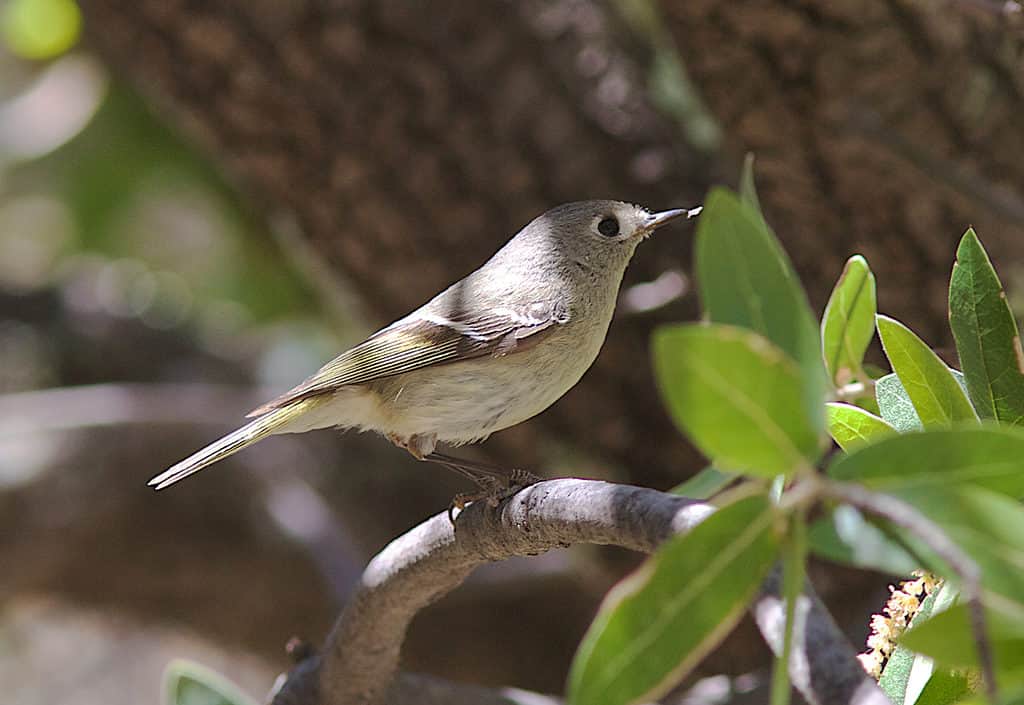
Cassin’s Vireo (
Vireo cassinii) is a small North American songbird, ranging from southern British Columbia through the western United States.
©iStock.com/OldFulica
Habitat and Range: The Cassin’s vireo breeds throughout most of California before migrating to Mexico for the winter. They inhabit a variety of forests, including deciduous, mixed, and coniferous. Although, they prefer pine, fir, and mixed forests in the interior of the state.
Features and Coloring: These small songbirds have sturdy frames, short bills, and long wings. They are olive-green above and white below with gray heads.
Diet: Insects, spiders, fruits, and berries
Vocalizations: Halting songs and harsh, raspy calls
Nests: A bulky grass and bark cup placed in a tree fork
Evening Grosbeak
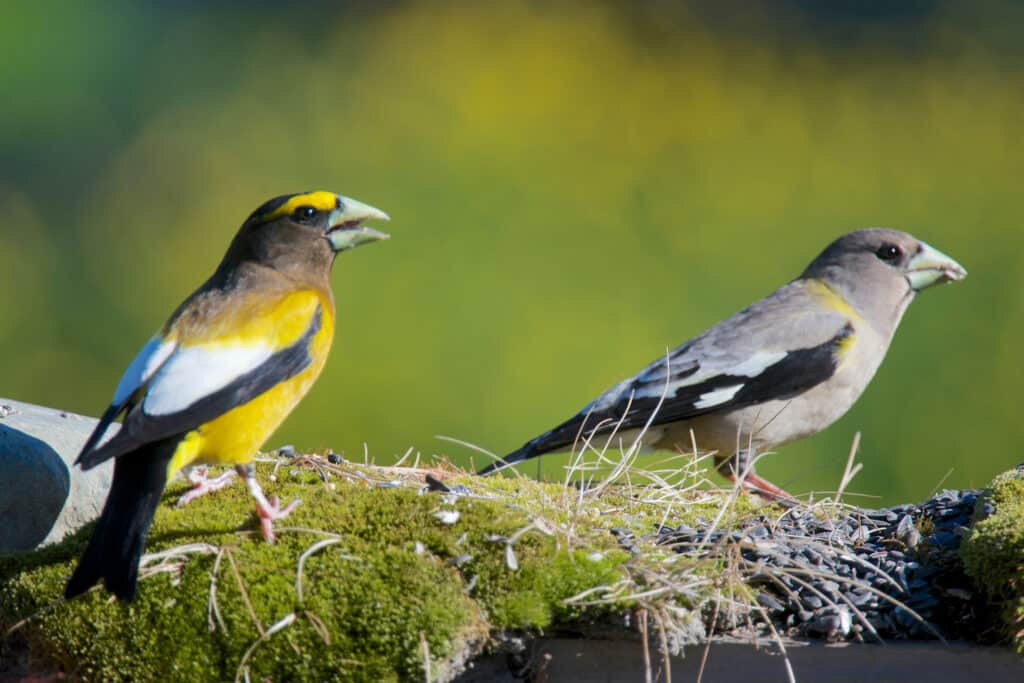
During winter, you will find the evening grosbeak in deciduous and coniferous forests. But they may also inhabit urban and suburban areas.
©Danita Delimont/Shutterstock.com
Habitat and Range: Evening grosbeaks spend winters in Sacramento and throughout most of the state. Some even live year-round in Northern California. During winter, you will primarily find them in deciduous and coniferous forests. However, they may also inhabit urban and suburban areas, especially lots close to bird feeders.
Features and Coloring: These finches are large and heavyset with thick, conical bills. They also have thick necks, short tails, and broad chests. Males are bright yellow and black with prominent wing patches. Females are primarily gray with a green tinge and black and white wings.
Diet: Seeds, berries, and insects
Vocalizations: Short, uneven warbles and sweet piercing calls
Nests: A loose twig cup lined with grass and placed on a horizontal tree branch away from the trunk
Tundra Swan

The tundra swan winters in California near large bodies of water, like lakes, estuaries, rivers, and ponds. These large waterfowl have long necks.
©hay_mn97/Shutterstock.com
Habitat and Range: The tundra swan spends winters in Northern and Central California, especially near the coast. You will find them in large bodies of water, such as estuaries, lakes, bays, rivers, and ponds. You can also see them foraging in flocks on agricultural fields.
Features and Coloring: They are very large, heavy-bodied waterfowl with long necks and sloping bills. Their plumage is entirely white, and their beaks are black with yellow spots at the base. They also have black legs and feet.
Diet: Seeds and aquatic vegetation
Vocalizations: Smooth, high-pitched bugling
Nests: A low mound of plant material near open water
The photo featured at the top of this post is © iStock.com/johnrandallalves
Thank you for reading! Have some feedback for us? Contact the AZ Animals editorial team.






